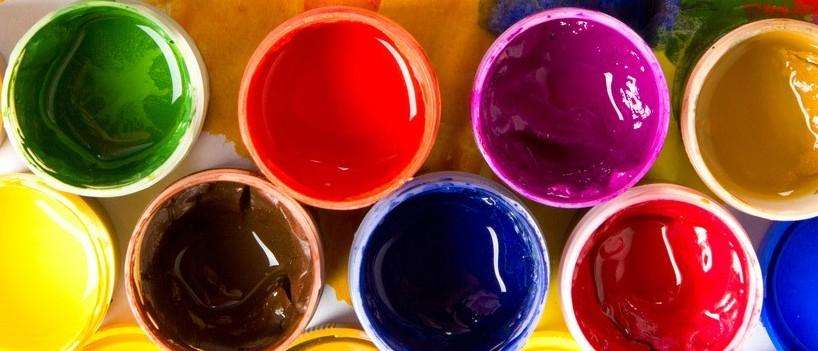


Latex paints are colorful, can be chosen freely, and have good decorative effects and long service life. Therefore, architectural coatings with acrylic emulsion as film-forming materials are playing an increasingly important role in urban dressing.
As an important component in latex paints, the selection and use of organic pigments directly affect the color retention of latex paints. Understanding of pigment properties and applications can guide the production of high-quality latex paints.
1.Pigment color paste
The application of organic pigments in architectural coatings is mainly accomplished through pigment pastes. Colorants are highly dispersed pigment preparations. The content of organic pigment in the color paste is 30% to 50%, and the content of inorganic pigment is 60% to 75%. The higher the pigment content, the smaller the adverse effect on the color paste system. It is required that the color paste has good dispersibility, good compatibility with aqueous polymer emulsions, and does not contain binders, ethylene glycol and heavy metal ions that are harmful to the human body; it is required that the color paste batches have good uniformity and the coloring power error is controlled within ± 5% Higher requirements ± 3%); color paste stability is required, at least 2a storage period. It is required that the color paste can be mixed with the latex paint in any proportion. The composition and production conditions of various color pastes vary depending on the nature of the pigments contained.
2.Application of pigment paste
Pigment color paste is widely used in various interior and exterior wall architectural coatings (latex paints), water-based industrial coatings, water-based wood coatings, etc. The use of colorants in latex paints is a mix of two dispersion systems. The pigment in the color paste is dispersed in water under the action of surfactant A. The performance and quantity of the surfactant determine the content, degree of dispersion and stability of the pigment; while the film-forming substance (resin) in latex paint is active on the surface Agent B is dispersed in water under the action of surfactant B. The properties and quantity of surfactant determine the average particle size, gloss and stability of latex paint. If the compatibility of the two dispersion systems is not good, the following problems will occur:
① If the type of dispersant used in the color paste does not match, the dispersants will react with each other and demulsify;
② If the amount of the dispersant used in the color paste is not enough, it will lead to poor stability of the architectural coating;
③ if the dispersant used in the color paste is poor If the amount is too large, the coating film will have poor water resistance and poor drying performance.
④ If the pigments agglomerate, it will lead to a decrease in paint tinting power, hue change, hiding power, gloss reduction, poor flowability, and poor leveling.
3.Precautions for using pigment paste
Choose to use high-quality pigment pastes. The color paste should have stable hue and tinting power, and have good light resistance, weather resistance, acid and alkali resistance; it must be compatible with the coating system and can be mixed with each other; stable storage, no precipitation, no flocculation, and dry Not frozen; reasonable price-performance ratio.
Before use, the color paste and coating compatibility test should be done, and fully stirred to avoid uneven color paste state due to temperature changes during transportation or long storage time (layering, density difference between upper and lower layers), which affects the amount of addition Accuracy; it is best to add color paste while stirring the paint, and the paint must be stirred evenly. It is best to add the color paste directly. Do not add it after dilution with water. If you use an incomplete bucket of colorant at one time, you must cover the lid immediately after use to prevent the surface of the colorant from contaminating or drying and powdering the surface of the colorant due to water volatilization, which will affect the next use.
The maximum amount of colorant in latex paint should be controlled within a reasonable range. Exceeding a reasonable range will destroy the balance of the latex paint system and seriously affect the durability of the coating film, especially the water resistance. The maximum amount of organic pigment colorant should not exceed 8%, and the maximum amount of inorganic pigment colorant should be within 15%. When producing exterior wall coatings, try to choose color pastes with good lightfastness, weather resistance and alkali resistance. Generally speaking, iron oxide pigment pastes are more alkaline resistant than organic pigment pastes.


.jpg)